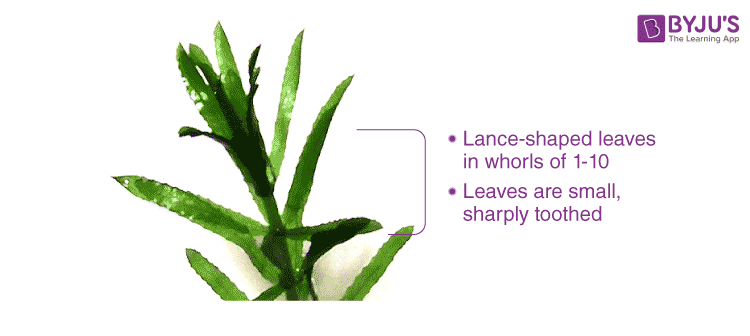Hydrilla is a submerged water plant. They have tiny leaves with serrations along their margins. The leaves are whorled together in a bunch. Also, they produce almost-transparent small flowers. They are highly resistant to salinity compared to many aquatic plants. Furthermore, they can grow in low sunlight areas.
Hydrilla reproduces through turions which are bud-like structures. These turions are formed on the leaf-axile. Also, tubers are produced along the rhizome/stolen. Stem fragmentation is also seen as a mode of reproduction. Thus, they reproduce asexually by means of vegetative propagation.

Distribution
They can be found in a variety of aquatic environments, such as rivers, lakes, ponds, reservoirs and even in tidal zones. These plants are widely distributed across Asia, Europe, Africa and also Australia.
Submerged Plants
The underwater aquatic plants have their roots fixed to the substratum of the water body. Thus, they thoroughly get submerged in the water. Also, their roots are poorly developed as they do not need much nutrition from the substratum. The primary role of roots is to provide anchorage. Examples of submerged plants are hydrilla, eelgrass, pondweed, bladderwort, elodea, etc.
Adaptations of Hydrilla
Hydrillas are successfully distributed across continents due to their resistance and adaptations. Their aquatic adaptations are as follows –
- They have slender, long and spongy stems to move freely along the water current.
- Their stomata are absent as no transpiration happens underwater.
- Cuticles usually prevent water loss. Hence, hydrilla does not need a cuticle as they are fully submerged.
- The plant cell secretes chlorophyll. Also, the cells produce mucilage that covers the whole plant body. This mucilage prevents the plant from rotting.
- They are most abundantly filled with aerenchyma tissues. This provides buoyancy to the plant.
Also see: Transportation in plants
Frequently Asked Questions
What are hydrophytes?
Plants that are adapted to live underwater are termed hydrophytes. They are the primary producers of the aquatic ecosystem. The plants can be completely submerged, floating or emerging in nature. Also, algae are a kind of hydrophytes.
What is Vallisneria?
Vallisneria is a freshwater plant similar to hydrilla. It is a tall tape-like grass structure. They are also known as eelgrass. Vallisneria can be found in America, while hydrilla is not native to the American continent.
What is an invasive species?
The indigenous or native species are a part of the original ecosystem. In contrast, invasive species are foreign organisms that disrupt the original biota. They can spread quickly and disrupt the growth of native species. For example, hydrilla was an invasive species in Florida (America). Hydrilla was introduced in Florida around the 1950s, and they are now one of the most severe seaweeds in the American freshwater habitats.
Keep Exploring BYJU’S Biology for more interesting topics.

For class 12